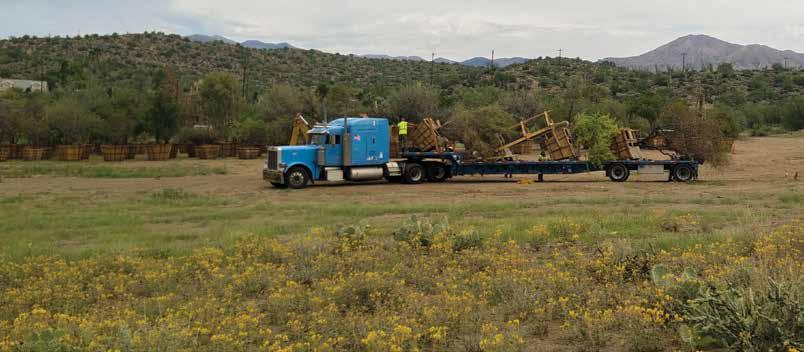
3 minute read
New in the Horticulture Department
Update by Jeff Payne, Director of Horticulture
While all of us at the Arboretum are very involved in opening the new Wallace Desert Garden, we are also working on other horticulture projects, plans, and collections.
Advertisement
Let's not forget that the Arboretum has three significant nationally accredited collections associated with the Plant Collections Network (PCN) in the American Public Gardens Association (APGA).

The first is the Southwest Oak collection, encompassing taxa from the genus Quercus. We have 114 individual trees representing 29 species in this group. The collection consists of a concentration of oaks from the desert southwest, including west Texas, Mexico, and Arizona in the U.S., and Coahuila, Chihuahua and Sonora in Mexico. This collection is designated for the preservation and conservation of these trees and their genetic material. We also conducted a five-year study on the trees, recording growth habits and growth rate, among other aspects. The study also considered which of these trees would be an excellent selection to possibly introduce into the nursery trade.
The second PCN collection at the Arboretum is the Desert Legume collection, including the Desert Legume Program (DELEP) and seed bank in Tucson. This collection also has seed secured in the U.S. Department of Agriculture seed vault in Fort Collins, Colorado, and at the Svalbard Global Seed Vault, which is an international seed bank inside the Artic Circle north of Norway established to bank seed for long term in case of a global crisis or catastrophe.
Our third PCN collection is the Eucalyptus collection. We have 307 accessions, comprising of 529 individual plants representing 111 taxa. The Eucalyptus collection is one of the oldest collections in the Arboretum, with many planted as early as 1926. Based on a collections assessment in 2014, we ranked as the 10th largest global holder of accessioned Eucalyptus and the 2nd largest Eucalyptus collection in the United States. Six of the taxa are globally unique to Boyce Thompson Arboretum.
We have also started a conservation and educational collection of two Arizona native species of Dudleya, a genus of succulent perennial plants that resemble echeverias, graptopetelums, or hens & chicks. The two species we have been collecting, Dudleya saxosa and Dudleya pulverulenta, are wild seed grown by local rare plant enthusiasts. The fleshy leaves occur in basal rosettes, in colors generally ranging from green to bluegray. They are native to the Superstition Mountains near the Arboretum, and throughout the central Arizona mountains in areas of exposed rock outcroppings and cliffs. Typically, they are not noticed until their last spring bloom season. Their flowers are on a 12- to 18-inch stalk, and the colors are yellow, orange and red. Recent stories in the news reported on the illegal harvesting and collecting of Dudleyas native to California—endangering and even wiping out entire populations of certain species.
We are also re-establishing the arilbred iris collection, whose remnants are out in the canyon along the Main Trail just past the Herb Garden. So, what is an arilbred? The term aril applies to two groups of irises: the Oncocyclus from the Middle East, and the Regelias from central Asia. The word "aril" refers to the prominent white color seen on the seeds of these types of iris. We have made contact with some arilbred iris growers and collectors, who have generously donated approximately 50 small various rhizomes to Boyce Thompson Arboretum.
Another big project we are currently finishing up is an expansion of the Chihuahua Desert Garden. We are creating another trail loop representing the community of flora native to a montane oak forest one might see in the Chihuahuan Desert in Mexico. We are utilizing specific species of Yucca, Agave, Quercus, and cacti as foundation flora for the area. This new trail should be open by early March 2020.
Finally, we are just starting the preliminary plans for a Mohave Desert Exhibit. We will be diving right into this in mid-2020, after the completion and opening of the Wallace Garden. This new exhibit will have a core foundation of species of Yucca, Agave, and cacti indigenous to the Mohave Desert region. This new exhibit will parallel the north side of the Chihuahuan Exhibit.
Stay tuned for more Horticulture Department updates!







